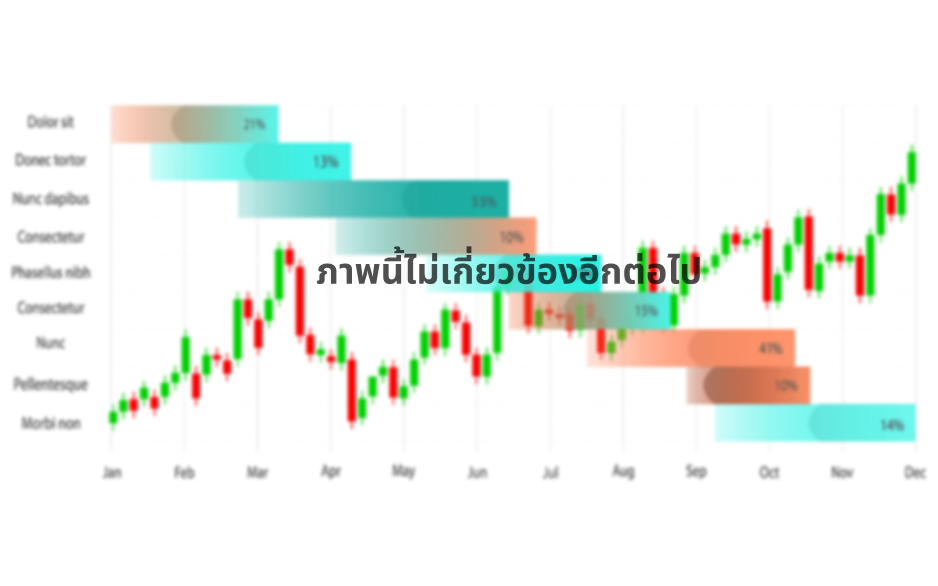The Federal Open Market Committee (FOMC), headed by Jerome Powell, will meet on March 16 and 17. The issues of further monetary and regulatory policy will be considered. According to the results of the committee's work, fresh economic forecasts from the regulator are expected.
After Biden signed the package for anti-crisis measures last week, investors had a number of questions. And so far, these doubts are strongly reflected in the current exchange rates of the currency basket.
Among the issues that are of the greatest concern to investors around the world are:
- Has the outlook for the US Central Bank changed in light of the new vaccine developments?
- How concerned is the Federal Reserve System with inflation associated with an increase in the money supply?
- Does the Fed plan for further growth in bond yields?
- What about the market prices for futures?
- Will the interest in excess reserves be increased?
- Will there be favorable conditions for banks?
Let's take a closer look at each issue and the perspectives on how to solve it.
Right now, the world market is in a kind of euphoria due to the success in vaccination, despite the obvious shortcomings of the latter. Investors tend to be optimistic about the role of vaccines in preventing COVID-19. Nevertheless, the facts are such that there is still a long way to go before overcoming the crisis. So, although the peak incidence in the US has passed, since February 22, the number of cases of infection globally is growing, including at the expense of developing countries.
On February 22, there were 349,648 new cases recorded, then by March 13, the number of new cases already soared to 492,351.
Analysts attribute this to the weakening of quarantine measures and the increase in contacts between people. In addition, the virus quickly mutates, creating new, more dangerous, strains. As a result, we are actually talking about a long-term protracted war that will periodically break through the market.
How worried is the Fed about inflation?
The adoption of Joe Biden's pandemic-related anti-crisis package has raised fears among investors that America's monetary policy will push inflation higher.
Despite the recent data from the US Central Bank on consumer prices for February, which showed a slight increase, the overall inflationary expectations are still high. The Fed has not yet changed its overall inflation forecast for the year. Nevertheless, the forward breakeven inflation indicator for the next 5 years shows inflation to rise to 2.1%, higher than the projected 2%. However, the new Fed policy from last year tactfully bypasses this issue, allowing inflation to "go beyond the target temporarily, for a certain period."
As you know, the additional issuance of the money supply causes inflation, which can be combated in various ways - from ignoring it to shifting the financial burden onto dependent economies. The most bloodless way is the withdrawal of the surplus money supply. However, this option requires delicate cash flow management. Is the Fed able to cope with such a task if the first package of subsidies for the fight against coronavirus completely failed on the ground?
The Fed was going to keep current rates around zero until the US reaches full employment. As part of the anti-crisis measures, the government bought back Treasuries and mortgage-backed securities for $120 billion.
Recently, however, Powell changed his tone somewhat and turned to rhetoric urging banks to be patient with changes in the bond buyback program. He also insists that the unemployment rate of 6.2% is underestimated because it does not take into account people who abandoned the idea of looking for a job.
Analysts say that despite big gains in lowering unemployment rates, official data may obscure actual numbers for the poor, who have been hit hardest by the recession.
Zachary Griffiths, a macro strategist at Wells Fargo Securities, says that "the government clearly understands that significant progress is still far ahead, so its forecasts and actions are cautious."
Thus, investors suspect, and Reuters bluntly states, that no one, including Powell himself, expects inflation to stay within the established corridor.
Does the Fed have concerns about rising bond yields?
The volume of the US government debt to external investors is constantly growing. Large issues of benchmark bonds, which sold off last week, led to a natural increase in their yields.
The market is still counting on tighter regulatory policy from the Fed, which will prevent Treasuries from continuing to rise, but it may be disappointed. Now analysts are hoping that the Fed may well buy up longer-term bonds to support prices. However, Powell, announcing that he did not take his eyes off the recent volatility of bonds in the market, immediately dismissed the logical assumptions that such a situation would become a problem for the Fed in the future.
At the outset, the 10- and 30-year Treasury bills auction held last week raised no concern as sales seemed to be sufficient despite the mediocre results from the 7-year bond auction a week earlier. However, the European Central Bank also issued a large batch of long-term bonds to the market, and investors simply could not swallow such a large chunk. And despite a slight drop at the beginning of the auction, an increase in yield was inevitable, and on Friday, both lots reached new 13 and 14-month highs.
What about futures prices?
EUR/USD futures, which are guided by short-term US interest rate settlements over the next several years, fully account for the rate hike in the United States by March 2023, predicting more than 50 basis points in yield growth. Pricing is now actually targeting mid-2024.
However, pricing alone does not guarantee future events. After the 2008 financial crisis, the Fed suspended the process for seven years. Over the years, market participants expected rate hikes in the first year or a year and a half after the markets collapsed, but the Federal Reserve decided to start raising rates only in 2015.
The currency basket is currently unstable in anticipation of the news.
The market thinks the Fed will raise the IOER if the federal funds overnight rate falls by more than 5 points. This rate level is likely to already limit investor participation in the market and make it more sensitive to price fluctuations, since an increase/decrease in this rate, paid from the balances of bank reserves held in the Fed's deposits, indirectly signals the presence and volume of these reserves. Accordingly, it affects other short-term rates and keeps the federal funds rate in the corridor from 0 to 25 points.
However, so far this indicator has remained stable at close to 7 points. Of course, any rate hike is not an urgent matter and can be postponed to the Fed meeting in April.
And yet, the drop in Treasury bill yields and disruptions in the repo markets led to negative rates on some deals, and as a result, increased the possibility of an early reduction in the IOER rate.
Will help to banks be extended?
Biden's package of anti-crisis measures is the pure brainchild of Democrats who stubbornly want to leave big business without significant investments, except for the costs directly related to overcoming the pandemic. So, the same Microsoft expects to get up to a quarter of a piece of the pie cut off by the government to protect against cyberattacks.
However, banks remain in the interest of extending the regulatory break allowing banks to disregard reserve deposits and treasuries in capital adequacy ratios.
This exclusion from the supplementary leverage ratio (SLR) was adopted as part of the previous anti-crisis program, and its remnants are subject to termination, except for the scandalous paycheck protection program (PPP). This may lead to the fact that banks will need to sell or restrict the purchase of Treasury bonds, abandon the increase in deposits, and reduce the volume of lending in the repo market, which will also lead to a drop in demand for bonds.
Some financial giants will want to counter this trend, as the purchase of Fed bonds, combined with the termination of the program, will flood them with reserves, significantly reducing the amount of free money supply for current operations.
By itself, the combination of growth in yields plus the end of support for banks can provoke an even greater rise in yields on bonds and a critical drop in demand for them.
A clear signal came from the Fed that the benefit will not be extended. And yet, investors expect that tax exemptions will take place. Otherwise, the market will return to a state of high volatility.
At the same time, the SLR is not the subject of the forthcoming meeting of the open market committee. However, Powell will most likely be asked a question at the briefing.
In general, investor sentiment is restrained.
For example, AFS analyst Arne Petimezas said, "We expect the Fed to stubbornly stick to its original mitigation plans, although Powell's team may be optimistic in their forecasts. But there is a risk that it will still be hawkish. Biden's stimulus package was passed without much controversy, and now his administration will try to push through a major infrastructure bill."
Cornerstone Macro economist Roberto Perli argues: "The meeting of the Committee will not confirm our hopes for an earlier and faster start. Most likely, his position will remain the same in the foreseeable future. Don't expect the FOMC's tone to change."
Over the past year, the Fed has kept interest rates around zero and has promised to keep them at that level until the economy reaches full employment and inflation reaches 2% and may exceed these rates for some time.
What can you expect?
With economic forecasts in December, the US Congress managed to pass two aid packages totaling $2.8 trillion. This is approximately 15% of the annual GDP of the United States.
Given the surge of all this money supply, the success in vaccinations, and the growing number of states that have loosened quarantine measures, analysts expect the Fed to raise its economic growth forecasts by 1.8%. If so, 6% would be the highest annual growth rate for the economy since 1984, when it was 7.2%.
Among them, Natixis economist Troy Ludtka from New York argues that there is enough macroeconomic stimulus to push beyond 6% growth.
Many experts tend to think that the Fed is likely to forecast interest rate hikes by 2023.
So, economists at Nomura say that this is a "serious challenge" and in fact, you should look at the indicators of mid-2023.
In the meantime, we are awaiting the end of the meeting and will be able, based on its results, to see how realistic the approach of the FOMC members is.
We remind you that on Thursday, the banks of England and Japan will also hold their meetings on further financial policy.













